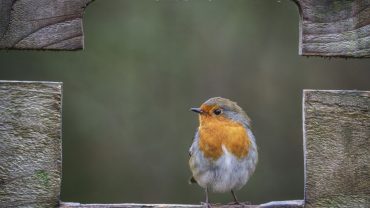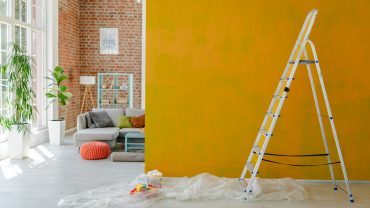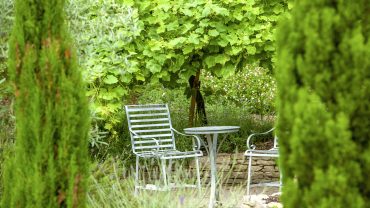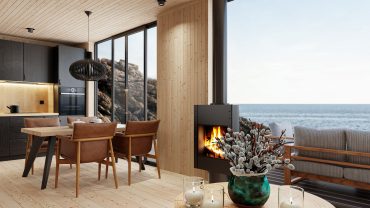In today’s world, people’s natural habitat has largely become the built environment, spending roughly 90 percent of their time indoors. Yet, general consensus is that connecting with nature is not only beneficial but vital for physical health and cognitive function. According to the biophilia hypothesis, this connection is ingrained in human DNA. This is where biophilic interior design comes into play, blending our inherent need for nature with modern living.
By incorporating natural elements into interiors, biophilic design aims to create spaces that are both refreshing and healthful. So, how might these principles transform living spaces? Dig in as we explore the world of biophilic house interiors.
The Biophilia Hypothesis

The process of biophilic design (Credit: ArchiViz via Getty Images)
Biophilic interior design has its roots in the concept of biophilia, a term coined by social psychologist Eric Fromm in 1964. Combining the ancient Greek words for life and love, Fromm defined it as “the passionate love of life and of all that is alive.” In 1984, biologist EO Wilson used the same term to describe “the urge to affiliate with other forms of life.” Each of these academics came at it from different perspectives, one psychological, the other biological. But, in the end, biophilia is generally understood as an innate link between humans, nature and other forms of life; that there’s a genetic predisposition or inherent desire to connect with nature. And that embracing this connection is vital to people’s physical, cognitive, and mental wellbeing.
As for the biophilia interior design link, this is one of many fields in which the theory has been applied, with neuroscience, architecture, even technology among them. Let’s explore the specifics of biophilic design.
What is Biophilic Interior Design?

Bringing the outside inside (Credit: Tatiana Buzmakova via Getty Images)
As we’ve already seen, biophilia posits that connecting with nature is vital to people’s wellbeing. And, because people spend most of their lives indoors, biophilic house design brings the outside inside. In fact, its proponents point to studies which show that designing homes using this approach creates healthy environments that can not only reduce stress, but improve everything from creativity to cognitive functions and even promote healing. So, let’s look at how this is achieved.
The Principles of Biophilic Design Interiors

Stunning stone fountain (Credit: BasieB via Getty Images)
Biophilic interior design is about creating environments that connect occupants with nature on as many levels as possible. It weaves nature into the built environment. And it does so on the basis that the most impactful experiences involve meaningful, diverse, and multi-sensory interactions with natural elements. This integration is often divided into three categories:
Nature in the Space
This is about incorporating nature directly into a place, including:
- Multisensory stimuli: Having views of plants, trees, and other natural elements. But also hearing, touching, smelling, or even tasting things from nature.
- Variability: Being aware of natural cycles such as through changes in temperature and airflow as well as light and shadows that shift throughout the day.
- Water Features: Adding water elements like fountains or ponds.
Natural Analogues
This refers to the use of forms, materials, and patterns that are not alive, but are reminiscent of nature, be they artwork that depicts natural scenes or is made from natural materials, furniture with organic shapes, or simply using natural materials like wood and stone. These elements help create a natural feel, even if they are not directly living things.
Nature of the Space
This involves designing spaces that emulate the feel of the natural environment. This includes having open views, creating cosy hideaways, incorporating elements of mystery, and providing safe ways to experience risk.
Biophilic House Design in Practice

At one with nature (Credit: timandtim via Getty Images)
We’ve explored the principles that underlie biophilic house design, but how can these be implemented in practice?
Natural Light & Ventilation
A biophilic design interior prioritises access to natural light and fresh air. Large windows, skylights, and open spaces that allow for cross-ventilation help create a dynamic and healthy environment.
Use of Natural Materials
Materials like wood, stone, bamboo, and natural fibres are staples in biophilic house interiors. These not only add aesthetic value but also contribute to a healthier indoor environment by reducing the presence of synthetic substances.
Organic Shapes
Utilising furniture and decor with curves and irregular shapes mimics the forms found in nature. Even flooring or walls can be designed to be uneven, emulating the irregularity of the outdoors.
Incorporating Water Features
Water has a calming effect and can significantly enhance the biophilic quality of a space. Indoor waterfalls, aquariums, or simple water fountains can be used to introduce this element.
Plant Life
Plants are perhaps the most obvious and effective way to implement biophilia interiors. They improve air quality, reduce stress, and add vibrant beauty. Vertical gardens, potted plants, and green walls are popular choices.
Nature-Inspired Patterns & Colours
Biophilic design interiors often use patterns and colours that mimic those found in nature. Earth tones, green hues, and organic patterns can help create a serene and natural atmosphere.
Natural Scents
We’ve seen that biophilic house interiors should ideally involve all the senses. One way to embrace this link is by incorporating natural scents through essential oils or fresh flowers.
Natural Soundscapes
For those wishing to go that extra sensory step further, adding sound systems that play recordings of natural environments, such as bird songs or ocean waves, can create a more immersive experience.
Reaching a Natural Conclusion

Biophilia at home (Credit: ArchiViz via Getty Images)
In summary then, by forging a seamless link between the built environment and the natural world, biophilic interior design aims to create spaces that are not just beautiful but also promote health, wellbeing, and sustainability.












